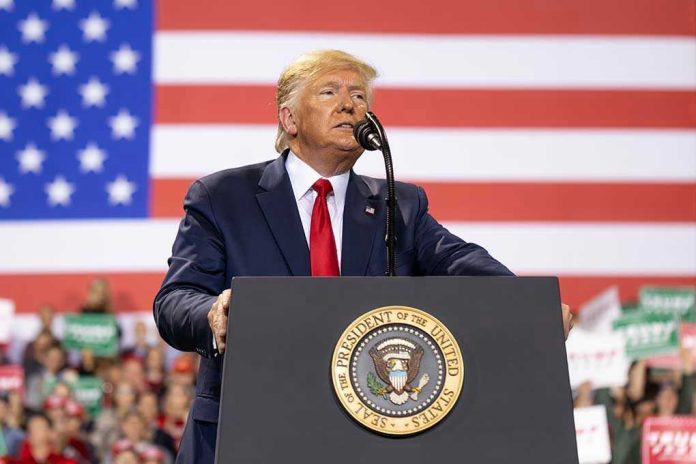
The idea of a 70-mile tunnel linking the US and Russia, proposed by the Kremlin and allegedly to be built by Elon Musk, is stirring geopolitical intrigue and disbelief alike.
Story Overview
- An unprecedented infrastructure proposal connecting Alaska and Russia.
- Involves high-profile figures such as Donald Trump and Elon Musk.
- Raised during a meeting between Trump and Ukrainian President Zelensky, sparking diplomatic tension.
- Remains a speculative idea with no formal steps towards realization.
A Bold Proposal with Geopolitical Undertones
A senior Kremlin official has floated an audacious idea: a 70-mile undersea tunnel connecting Russia and Alaska, marking a direct link between the US and Russia. This proposal emerged during a White House meeting and was met with mixed reactions. While President Trump expressed a willingness to consider the plan, Ukrainian President Volodymyr Zelensky displayed clear discomfort, underscoring the sensitive geopolitical dynamics at play.
The proposal’s timing is intriguing, coinciding with fluctuating US-Russia relations and ongoing debates about engagement strategies. The involvement of Elon Musk adds a layer of technological ambition, given his reputation for tackling ambitious projects through his companies, particularly The Boring Company. However, the idea remains speculative with significant technical, financial, and geopolitical challenges ahead.
Historical Context and Feasibility
The concept of linking Alaska and Russia across the Bering Strait has been a subject of speculation since the 19th century. Historic proposals like the “Intercontinental Peace Bridge” have never moved beyond the conceptual stage, hindered by technical and geopolitical barriers. The Bering Strait region is remote and environmentally sensitive, making such projects daunting.
Recent advancements in tunneling technology, spearheaded by Musk’s ventures, have revived public imagination about such megaprojects. Yet, experts highlight immense challenges, including the harsh Arctic environment and potential geopolitical repercussions. The proposal’s environmental impact and the concerns of indigenous communities also loom large.
Stakeholders and Strategic Interests
The proposal involves several key figures and organizations. Donald Trump may view the project as a potential legacy-defining achievement or a diplomatic tool. The Kremlin could use the idea to test US willingness for engagement or as a signal of openness. Elon Musk, known for his ambitious projects, might find the technical challenge appealing, although political approval is crucial.
Ukraine’s President Zelensky is wary, concerned about a potential shift in US-Russia relations that could undermine Ukraine’s geopolitical position. Environmental and indigenous groups are likely to have strong views, given the potential impact on the fragile Arctic ecosystem and local communities.
Current Developments and Speculations
As of now, the tunnel proposal remains at the level of public suggestion, with no formal feasibility studies or agreements announced. Trump’s public comment, “A tunnel from Russia to Alaska. That’s… interesting… I would have to think about it,” reflects the current status—more curiosity than commitment.
Zelensky’s opposition underscores the diplomatic tension and skepticism surrounding the proposal. Media attention and public debate continue, but without concrete steps towards realization, the idea remains speculative. The proposal’s impact on US-Russia relations and Arctic geopolitics depends on whether it moves beyond the conceptual stage.



